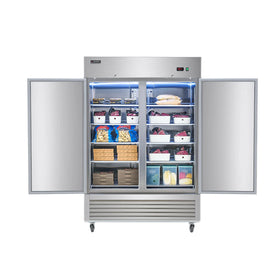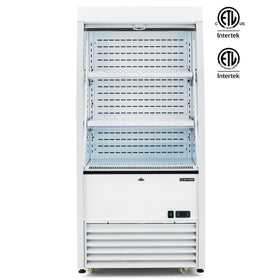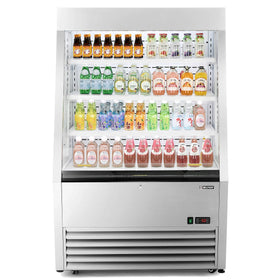Many people cook their steak on a grill, but it is also possible to cook a steak on a griddle. In fact, in terms of flavor, texture, and taste, an electric griddle is just as capable of handling steak as any other cooking equipment: its surface produces even and consistent heat, which is perfect for your steak to cook uniformly and without any hot spots.
However, a griddle is not a grill, and there are some steps you must take in order to achieve the right balance of high heat and careful timing. Cooking a steak on an electric griddle requires care and attention, and you have to make sure the temperature is right, but the rewards are more than worth it.
Here’s a detailed step-by-step guide to cooking a delicious, juicy steak on an electric griddle, along with some tips you might need to get that steak well-cooked and ready to be served!
1. Start by Choosing Your Steak
Now, let's be clear: the perfect steak is the one you have at hand. However, if you have the option to choose, you’d want to start with a good-quality steak: a good steak just makes for a better cooking experience on the griddle. Moreover, a high-quality steak is your best bet if you want that mouthwatering flavor and juicy tenderness.

Tenderize if you have to
If you have a tougher cut (like flank or sirloin), then you have to tenderize it the hard way. Do not go too hard, though: gently pound it with a meat mallet or marinate for some time.
Again, the griddle can accommodate any kind of steak you have, especially if you take your time, follow the next steps, and cook it properly. What you cannot get around, however, is the next step.
2. Preparing the Steak
When preparing a steak, be it on a griddle or any other cooking equipment, it can sometimes be GIGO: garbage in, garbage out. How you prepare your steak before getting it on the griddle will determine the quality of the final results.
Everyone has their own personal preferences, but here are some general tips on preparing and seasoning a steak.
Start by letting it warm up
Take your steak out of the refrigerator 20–30 minutes before cooking so that it is at room temperature when you are ready to cook it. Do not make the mistake of taking your steak out of the fridge and cooking it instantly: it will not cook evenly or properly.

Season Generously
Pat the steak with paper towels to remove excess moisture and dry it. Cooking a wet steak is a mistake because the wetness allows the moisture to escape. A dry steak sears when it cooks, creating a barrier that stops all the flavorful juices from escaping.
Season both sides with kosher salt and freshly ground black pepper. This classic combination enhances the steak's natural flavors.
Optional Additions
Everyone has their own preferences when it comes to seasoning. For added flavor, you can add garlic powder, onion powder, smoked paprika, or any other preferred spice(s).
If you enjoy herbaceous notes, you might also want to consider a few fresh sprigs of rosemary or thyme, but those are to be added later during cooking.
3. Preheat Your Electric Griddle
Now, it is time to turn your attention to the griddle itself. Remember, the goal is to get your steak to be properly and evenly cooked on all sides, both the interior and exterior. Your griddle will help you do that. The following steps are crucial.

- To ensure your steak is well cooked on an electric griddle, set the temperature to about 375°F to 400°F. Setting your temperatures to this high heat is essential if you hope to achieve a good sear, which creates a delicious crust.
- Let the griddle heat for about 10 minutes. You can test if it’s ready by flicking a few drops of water onto the surface—if they sizzle and evaporate quickly, you’re ready to start cooking.
Oil the Griddle
Now, your griddle is likely non-stick, but you should still lightly brush it with a high-smoke-point oil, like avocado or grapeseed oil. This will help achieve a nice crust.
4. Sear the Steak
Searing the steak is where the real cooking begins. Place the steak on the griddle, and don’t move it around. It has to sear undisturbed in order to develop a flavorful crust.
When searing your steak on a griddle, pay attention to the cooking time for each side. Sear the first side for 3–5 minutes, depending on how thick it is and how done you want it to be.
- Aim for about 4 minutes on the first side if you prefer medium-rare steak.
- Carefully flip the steak using tongs. Do not pierce it with a fork, or else the juices will be released. Cook the second side for another 3–5 minutes.

5. Monitor Doneness
The best way to measure how ready your steak is is to insert a meat thermometer into the thickest part of it. Avoid the griddle surface (which is obviously way hotter than the stake itself).
Here is what different temperatures mean for your steak.
How to Read a Meat Thermometer|
Temperature Range |
Level of Doneness |
|
120°F–125°F |
Rare |
|
130°F–135°F |
Medium-Rare |
|
135°F–145°F |
Medium |
|
150°F–155°F |
Medium-Well |
|
160°F and above |
Well-Done |
While a meat temperature is great for accuracy, you actually don’t need one to gauge the doneness of your steak. A press test can be just as good: you press the steak with your finger or tongs.
|
Feel |
Level of Doneness |
|
Soft and squishy |
Rare |
|
Slightly bouncy with some resistance |
Medium |
|
Firm with little give |
Well-Done |
6. Consider Basting
In this latter stage of cooking, you can add a pat of butter and a sprig of fresh herbs like thyme or rosemary to the steak. This is a great last-minute finishing touch that adds another layer of flavor to the steak.
Tilt the griddle slightly and use a spoon to baste the steak with the melted butter and herb mixture. This step, called basting, gives the steak a richer flavor and enhances the crust.

7. Rest the Steak
The cooking process is done, but the preparation process isn’t. There are still some last steps to ensure that every bite of your steak is juicy and flavorful. Cutting into the steak too soon will cause the juices to run out, and your meat might end up too dry.
- First, remove the steak from the griddle and place it on a cutting board. Then, loosely cover it with foil to keep it warm.
- Let it rest for 5–10 minutes for the juices to redistribute throughout the meat.
And..there you go. Your steak is cooked and ready to serve!
Additional Tips for Cooking Steak on an Electric Griddle- Avoid Overcrowding. If cooking multiple steaks, leave space between them to ensure even cooking.
- Use tongs or a spatula to handle the steak, as using a fork or knife to flip it can cause it to lose juices.
How Good is Your Griddle?
All these steps are really easy, but you will easily run into trouble if you do not own a good, high-quality, durable griddle. And for those, there is only one place to go: Wilprep’s Kitchen.
Wilprep offers a wide collection of griddles both for commercial and home use. You will surely find the right size for your home or business, from countertop electric griddles to gas griddles. Here are some extra advantages of Wilprep’s griddles.

Why Wilprep Griddles?
- Even the smallest electric models have two heating tubes, ensuring speedy and uniform heating.
- The expansive cooking surface of all Wilprep griddles lets you cook large batches of your favorite dishes with ease.
- With a temperature range from 120°F to 570°F, Wilprep electric griddles come with adjustable knobs to let you dial in the ideal settings for achieving the perfect sear on food items.
- Features like the handy drainage hole and removable tray make cleanup easy. They efficiently collect excess oil and food residue.
- Crafted with food-grade 430 stainless steel, Wilprep’s electric griddles offer superior corrosion resistance and easy maintenance.
Check out Wilpep for the best electric and gas griddles and commercial refrigerators to bring your best recipes to life. Also, don’t forget to check out other useful tips and information from Wilprep, such as how to clean your griddle and 9 unexpected foods you can easily cook on your griddle.










